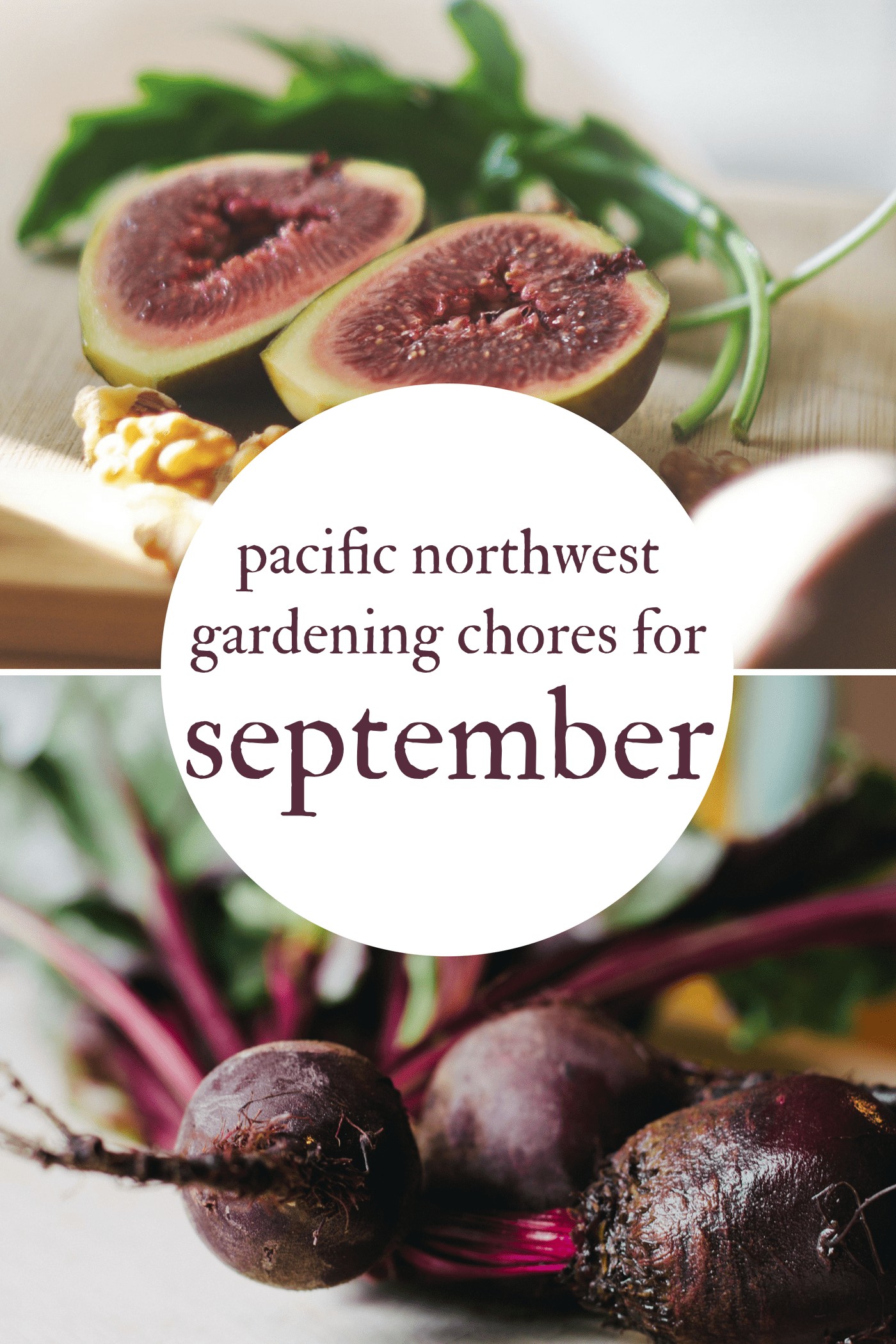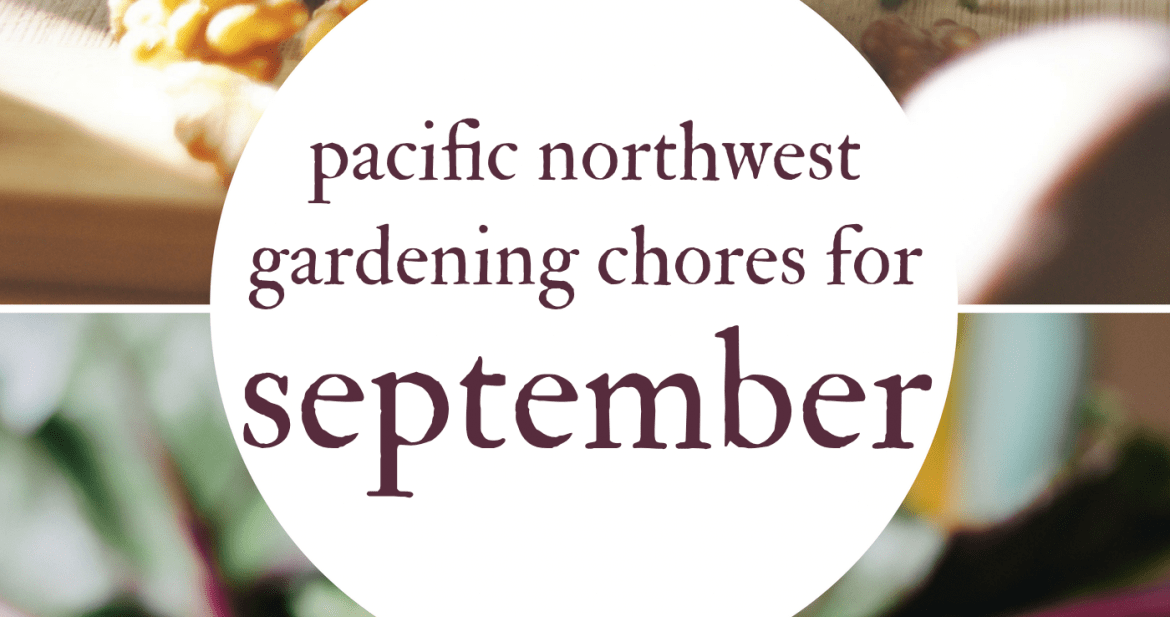Update for September, 2017: Time for some just-my-gut-feeling weather predictions.
I expect the generally hot, generally dry days of August to push pretty far into September. There will be a predictable cooling of temperatures, and an uptick in clouds, breeze, and occasional drizzle as we push further into the month, but I think it will be late September or early October before we start seeing typical Northwest fall weather of heavy clouds, stiff breezes and constant mist.
What does this mean in the garden? Hopefully, more ripe tomatoes and peppers, and a big harvest of winter squash. Your garden – and particularly your new transplants – will probably continue to need supplemental irrigation through at least mid-month.
September is a month of transition. Many of our favorite summer vegetables – green beans, cucumbers, zucchini – will continue to produce well through this month if we keep the plants picked, but the sheer glut of August will begin to give way to broccoli, beets, cabbages and chard as we nudge closer to fall.
This is also transition time for the gardener, as we begin to end our active gardening year. This month is the last chance to sow the last of the fall and winter crops – once October sets in, low light and cool soils will make it impossible to grow most crops to a harvestable size before year-end.
I say, embrace the transition and celebrate the one month a year when both cool and warm season crops are abundant.
Printable At-A-Glance Grow-Guide!
If you like your Gardening To Lists simple and direct, you’re in luck! Just click the image below to download the September At-A-Glance Grow Guide as a printable PDF.
Or, continue reading for the full details on everything you should be doing in your garden this month.
Plan and Purchase
- Take a look at your season extension infrastructure. If you plan on covering up your fall crops, this is the time to inventory and restock on row covers (get a heavier weight “frost blanket” for late fall or winter protection), cloche plastic, cloche clips, pop-up tunnels and similar items.
- You’ve ordered your garlic, already, right? Right?
- If you want to expand your fruit or perennial selection, order now and plan on late fall to get trees, bushes and vines in the ground.
Start Indoors/In A Pot
Unless you’ve got a really fancy heated greenhouse, there’s no reason to start anything under lights now.
Sow Directly Outside
Basically, you sow two things at this time of year. The first is fast maturing, non-heading greens. The second is overwintering crops you intend to harvest next spring or summer. In both cases, sow sooner rather than later.
- Lettuce
- Spinach
- Mustard Greens
- Asian Coles, like mizuna
- Arugula
- Mache
- Chard (baby greens)
- Kale (baby greens)
- Beets (for greens)
- Radishes
- Garlic – yup, right around the end of the month, it’s time to plant garlic. If you don’t get to it, anytime before Halloween is fine, but the more time the cloves have to get situated and send down roots in the fall, the bigger they’ll be the next year.
- Overwintering favas
- Overwintering peas
- Fall cover crops like clover, rye, small seeded fava or field peas should be sown now. I like a cover crop blend that includes at least one nitrogen fixer, like clover. Look for a blend designed for fall (not spring) sowing.
Transplant Out
If you still have brassicas or greens languishing in a pot, get them in the ground ASAP. I’m nearly done, I swear!
Harvest
This month the sheer glut of August will begin to taper off, but continue regular (daily or nearly so) trips out to the garden to harvest. Many of our favorite summer vegetables – green beans, cucumbers, zucchini – will continue to produce through this month and longer if we keep the plants picked.
September is always a transition, and between mid and late month, except summer fruiting vegetables to start to give way as root crops, brassicas and greens step up as our backbone crops.
Vegetables
- Beans
- Beets
- Broccoli
- Cabbage
- Carrots
- Chard
- Corn
- Cucumbers
- Onions
- Fennel
- Potatoes
- Peppers
- Salad greens
- Tomatoes – keep an eye out for spots, rots, molds etc. and yank any that show signs of ick before they can infect their neighbors.
- Turnips – If you’ve never had a really fresh butter-braised turnip, or a spicy pickled turnip, do not judge this humble vegetable too harshly. It’s a winner.
- Winter Squash – Leave these on the vine as long as possible, until the stem is hard. By the end of September, most of your squash that’s going to mature should be there. If weather, disease or frost threatens the vines, harvest the squash.
- Zucchini – still producing. God love ya, zucchini.
Fruit
- Blueberries
- Blackberries
- Raspberries
- Apples
- Grapes
- Pears – both Asian and European pears are ready to pick.
- Peaches
- Plums
- Figs
Maintenance
Start thinking “wind down” and “exit plan” when you are out in the garden. Even if you a year-round gardener, this month we start to downshift to lower maintenance strategies. Think about how to clean up from this summer and prepare for next spring’s planting.
- Weed – this is actually very important right now, because many annual weeds will be making zillions of seeds. Yank them now and save yourself hours in the future.
- Water – Until fall rains establish, pay close attention to the water needs of your garden, particularly for transplants and seedlings coming up for the fall and winter garden.
- Remember to harvest – many of summer’s most prolific plants will keep going into October if you keep them picked.
- Keep an eye out for powdery mildew. It’s pretty normal to see powdery mildew bloom on squash leaves as the weather cools down, but keep it as bay as long as you can. You can try one of the home remedies like milk sprays or baking soda sprays, but I just try to remove infested leaves if I see them.
- Keep an eye out for woolly aphids on your brassicas – these guys can form a dense mat that will suck the life (literally!) out of your kale, brussels sprouts, and other cole crops. Squish ’em or spray colonies off with a sharp jet of water.
- Finish up any summer pruning of soft fruit or espaliered/heavily-managed tree fruit as soon as possible. You don’t want your trees going into winter with fresh cuts. This is a good time to do one last pruning of any vines, like kiwi, grape or wisteria, that tend to eat a garden if left to their own devices.
- This is a good time of year to start a new compost bin to contain all the summer crops you’ll be yanking up soon.
- Take a look at your season extension infrastructure. Build, buy, or MacGyver whatever you’ll need to protect your cool weather crops when the temperature falls.
- Mulch, cover crop, or otherwise protect any open soil before the rains return. A huge amount of soil compaction in this area happens during winter, from the constant pounding of those innocent-looking raindrops. Avoid that your life will be easier come next spring.
Be honest – are you ready for cooler weather to show up and give you a little garden break? I know I am.



great newsletter!!